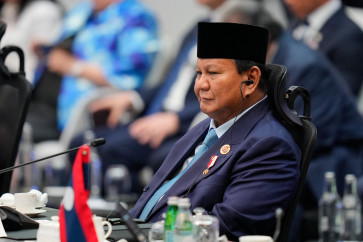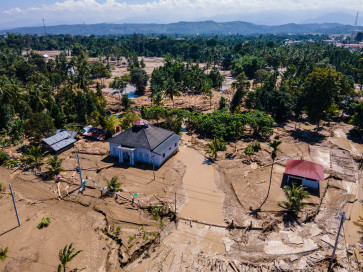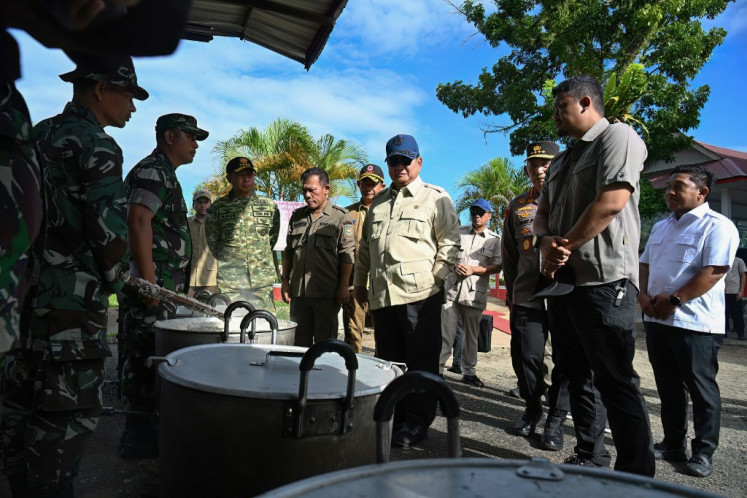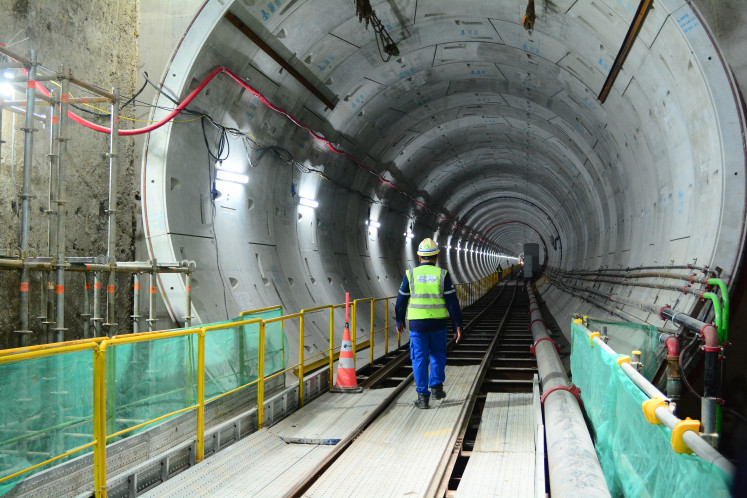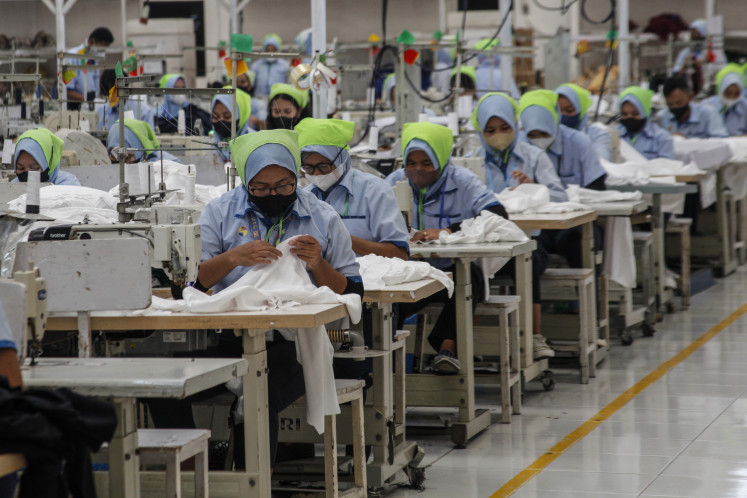Popular Reads
Top Results
Can't find what you're looking for?
View all search resultsPopular Reads
Top Results
Can't find what you're looking for?
View all search results80 percent of oil and gas revenues pay for subsidies
Despite the fact that the oil and gas sector’s contribution to state revenues continues to grow on an annual basis, according to a study by research group ReforMiner Institute, approximately 80 percent of these state revenues went to paying for energy subsidies
Change text size
Gift Premium Articles
to Anyone
D
espite the fact that the oil and gas sector’s contribution to state revenues continues to grow on an annual basis, according to a study by research group ReforMiner Institute, approximately 80 percent of these state revenues went to paying for energy subsidies.
“Only around 20 percent of the contribution is used for other needs,” ReforMiner Institute vice director Komaidi Notonegoro said.
According to data from upstream oil and gas authority BPMigas, the oil and gas industry earned US$35.23 billion in sales last year, jumping 32 percent from $26.49 billion in 2010. In 2010, the realization of energy and non-energy subsidies reached Rp 214.1 trillion (US$23.17 billion). The subsidy hit Rp 294.9 trillion in 2011.
The revised 2012 state budget revenue forecast set the subsidy at Rp 265.5 trillion, most of which would be designated for oil fuels.
“This situation has to be changed. There must be concrete efforts to curb our dependence on oil-based fuels,” Komaidi said.
ReforMiner’s simulation shows that if the government’s subsidy policy does not change, the total value of subsidies in 2025 could reach a staggering Rp 308 trillion for a total consumption of 69.2 million kiloliters. The simulation forecast that revenues from oil will decline due to depleting production as a result of years of exploitation.
Former BPMigas vice chairman Abdul Muin agreed with Komaidi that Indonesia was currently entering the fossil fuel energy crisis age, particularly in regards to oil. After Indonesia’s oil production period peaked in 1996 at 1.6 million barrels per day (bpd), output has since dropped continuously, until now, he said.
“Around 90 major oil fields in Indonesia have aged and there have been no major discoveries over the past decade other than the Cepu block in East Java,” he said.
“Even the oil reserves at the Cepu block are only 450 million barrels, which is far lower than the Minas and Duri fields in Riau, where reserves reach 4 billion barrels,” he added.
He believed, however, that there was still an opportunity for the country to crank up oil production because out of 60 basins across the country, only 22 have been explored and exploited. The remainder were mostly located in Eastern Indonesia and had huge natural gas potential, he continued.
“Therefore our consumption pattern has to be shifted from relying on oil to gas, and if possible, to renewable energy,” Abdul said.
BPMigas spokesperson Gde Pradnyana said his agency was committed to boosting revenues from the oil and gas sector.
The current increase in revenues was mostly driven by soaring global oil prices over the past two years, he said.
“In a bid to do that, we are improving operational efficiency through more strict supervision of oil and gas contractors,” he added.
Gde revealed that over the past five years the return on investment in Indonesia was still appealing, with an average of 60 percent for the government share and 16 percent for the contractor, while the remainder was used for paying for operations.
BPMigas had successfully facilitated the renewal of several gas sales contracts estimated to provide the country with additional revenue of Rp 6 trillion this year.



